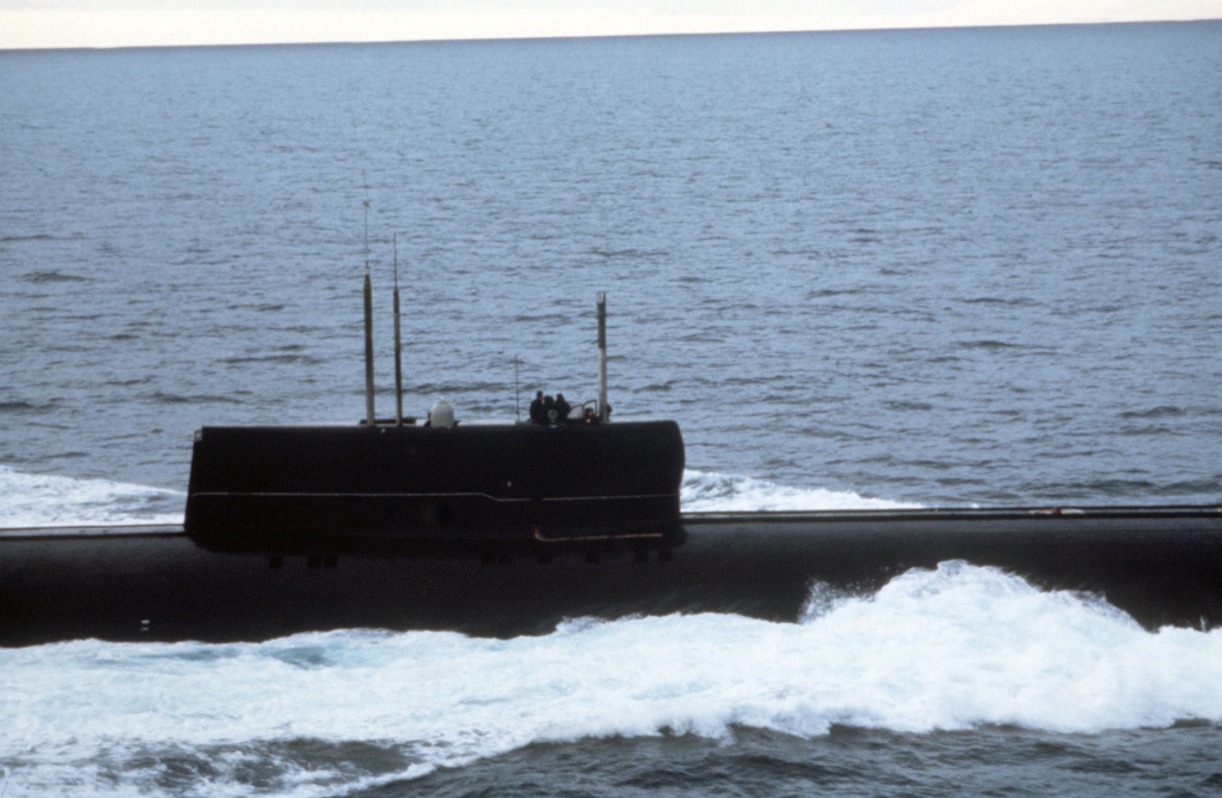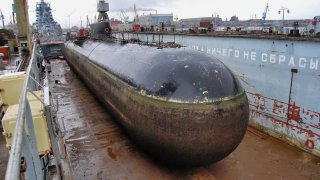Russia's Titanium K-222 Submarine Was Something the Navy Couldn't Match
The Soviet Navy's K-222, once the fastest submarine with a titanium hull, marked a significant Cold War innovation. Designed for speed and deep-diving, it was armed with SS-N-7 Starbright missiles and torpedoes.
Summary and Key Points: The Soviet Navy's K-222, once the fastest submarine with a titanium hull, marked a significant Cold War innovation. Designed for speed and deep-diving, it was armed with SS-N-7 Starbright missiles and torpedoes.

-Despite its impressive capabilities, the K-222 faced issues like intolerable noise levels and a severe reactor incident during refueling in 1980. Decommissioned in 1981, its story ended with scrapping in 2010.
-The K-222 remains a testament to Soviet naval ambition, showcasing both their engineering prowess and the challenges they faced in submarine design.
Inside the Soviet Navy’s Fastest Submarine: The K-222’s Legacy
When the Soviet Navy’s K-222 submarine was first constructed, it was the fastest in the world and the first to feature a hull made of titaium. However, the sole Project 661 “Anchar” ship only remained in service for eighteen years. An accident with the submarine’s nuclear reactor set back the Soviet’s intended use of the K-222. She was removed from service just before the collapse of the Soviet Union and officially scrapped in 2010.
The history of the Papa-Class:
During the Cold War, the Soviet Council of Ministers prioritized the rapid development and expansion of the Navy’s submarine fleet. Specifically, the Soviets desired a vessel that could travel at speeds at least twice the rate of predecessors, with an increased diving depth, smaller nuclear reactor, and capacity to hot long-range missile systems.
Design bureau TsKB-16 soon conceptualized project 661. This experimental cruise-missile submarine was expected to reach 38 knots underwater.
The Project 661 submarine was designed without relying on past Soviet designs. As noted before, she became the first ship to be constructed out of titanium, which was a huge endeavor for engineers. Since titanium is usually only found bonded to other elements, it is very pricey.
The submarine was also developed roughly simultaneously as the high-speed design Project 705 torpedo submarine, resulting in the infamous Alfa-class ships. While the two boats possess many differences, they both retained standard hulls constructed of lightweight titanium alloy instead of steel.
K-222 measured just over 350 feet in length and surfaced 7,000 tons submerged. The ship’s inner hull was fitted with nine watertight compartments in an interesting layout. The shape of the submarine appeared like Figure 8 since the first two compartments were narrower than the rest of the hull.
Two 177.4 megawatt VM-5M reactors powered the submarine, each supplying steam for the steam turbine driving the two propeller shafts.
Papa-Class Weapons
Armament-wise, the K-222 was quite lethal. The submarine was armed with ten SS-N-7 Starbright missiles, enabling the ship to better intercept and attack enemy aircraft carrier groups. For the first time, under-water launched cruise missiles were also deployed from a Soviet submarine. However, like other Soviet ships, the cruise missiles could only be reloaded in port. To compensate for this, the submarine also was equipped with four torpedo tubes with 12 torpedoes for self-defense.

While the Project 661’s top speed was impressive for the time, the submarine also had some major shortcomings.
Specifically, crew members reported intolerable noise levels onboard. In Cold War Submarines, author Norman Polmar elaborated on this noise issue:
“…when 35 knots was exceeded, it was like the noise of a jet aircraft. In the control room was heard not simply the roar of an aircraft, but the thunder of the engine room of a diesel locomotive.”
In 1980, while having her reactor refueled, the K-222’s crew lost possession of the specialized tools needed to handle the ship’s nuclear fuel rods. An incident onboard results in the reactor generating too much heat without water cooling down the reactor's core. The Soviets decommissioned the submarine one year later.
About the Author: Maya Carlin
Maya Carlin, National Security Writer with The National Interest, is an analyst with the Center for Security Policy and a former Anna Sobol Levy Fellow at IDC Herzliya in Israel. She has by-lines in many publications, including The National Interest, Jerusalem Post, and Times of Israel. You can follow her on Twitter: @MayaCarlin.
All images are Creative Commons or Shutterstock.


